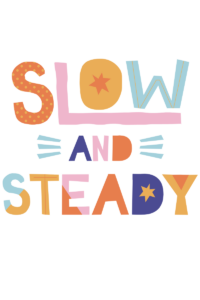Math manipulatives or math tools help students make sense of math. Teachers’ perceptions of manipulatives vary. You can see which teachers value and know the importance of math tools just by entering their classrooms.
Read: What You Really Need For The Perfect Classroom Set Up
If math tools are non-existent or locked in some closet, you can assume that they are not being used for instruction. Here are 5 misconceptions about manipulatives that might help change your mind about using them. And will hopefully encourage you to incorporate them into your classrooms.
Misconception #1 You need to show students exactly how to use each manipulative, and ain’t nobody got time for that.
Students don’t need to be shown how to use math tools, they need to explore manipulatives. Rooms should be set up for such exploration. I’ve seen teachers put out manipulatives as their warm-up, a center, some classrooms even have investigations during indoor recess. The goal of exploration is for students to understand the characteristics of each math tool.
Teachers can then include them in their lessons. If students are familiar with the tool, they can make a connection to the content.
Now it’s important to mention that the end game is not for students to use manipulatives as you dictate. Students should be able to work with the tools without teacher guidance. They should be able to strategically choose which math tool to use for the problem in front of them. Yes, it sounds scary to leave the kids to their own devices, but think about how we use this skill as adults. If I need to measure the length of a table and I don’t have a meter stick at home, what can I use instead?

Math Practice #5 Use Appropriate Tools Strategically
Misconception #2. There is only one set way to use math tools.
My favorite workshops I give are the ones where teachers get to play with manipulatives. For example, I’ll show teachers different ways to use pattern blocks. No, they are not just for geometry and that’s the misconception, isn’t it? When we see these tools used for specific standards, we think welp that’s it. Math tools can be manipulated in various ways; it just takes a little creativity and thinking outside of the box.
For example, something I have recently shown in classrooms is using a ten frame as a hundred frames. Let me explain that. Just like base 10 blocks are proportional and place value disks are non-proportional tools, I have made the ten frames a non-proportional model. Each (square) represents 10.
Why do this? It helps students make the connections of bridging to 100 just as ten frames help us bridge to 10.

Misconception #3. Students who already get the abstract don’t need to use manipulatives
Math tools helps math make sense. We use manipulatives to help us connect prior knowledge to new concepts. We are constructing conceptual understanding through the use of these tools.
Manipulatives provide students with a way to test and verify their ideas. Unfortunately, some classrooms restrict access of math tools to their “high achievers” or students who have reached the abstract level on their own. I’m not recommending that if students understand the abstract concept, ignore that and make them go back to step 1. Instead, you could ask students to prove their work using the math tools. You already know they know the equation or computation, why not have them show another form of representation? When students can use different representations to model a concept, They demonstrate their ability to understand the idea. But when students are introduced to only one representation, their misconceptions are enhanced.
There are a couple of reasons I recommend this. For starters, we have to get out of the mindset that manipulatives are just for the “low group.” Because a few students could already do some abstract thinking doesn’t mean that they should not get to explore the concept in the concrete form. Case in point, my son usually has some kind of inventive strategy to compute. We’re, of course, happy with this. Because they are not dictated by the teacher or us. However, when he was working on a specific unit and didn’t know where to go with it, I broke out some math tools to see if he could choose one to help him. He was baffled with base ten blocks and how to use them. That’s a problem.
(What Works ClearingHouse 2009) stated that using manipulatives was one of their top research-based recommendations.
Misconception # 4. I don’t have money to buy them
Not all manipulatives need to be commercially produced. Some can be made out of everyday items. It just involves some creativity.
Also, as mentioned before, math tools are not limited to specific standards. Greg Tang once said that unifix cubes are one of the most versatile manipulatives out there. Think about all you could teach with that one tool.
Virtual manipulatives are just as valuable. There has been a lot of debate if they are as good as hands-on manipulatives. But more recent findings suggest that they are worthwhile.
Finding grants are a great way to get math tools in your classroom and/or schools. Here are a few to check out.
https://www.neafoundation.org/for-educators/
https://teach.com/what/teachers-change-lives/grants-for-teachers/

Ten Frames
The viral #ClearTheLists campaign has popped up as a way for donors to help pay for items on a teacher’s Amazon.com wish list. Educators from across the country have put together a virtual shopping cart of items for classroom supplies. And donors help teachers “clear their list”. I’m not 100% a fan of this. Of course, I would like teachers to get help for their classrooms but I’m worried this is setting a precedent. If we start asking the public for donations what’s to say a district will now allocate funds for materials anymore if someone else is going to cover it. Needless to say, the choice is there for you.
Misconception #5. But it’s not going to be on the test, so why should I have students use them?
Teachers can use manipulatives in assessments as well. What tends to happen is that we do C-P-A but only assess at (A) part. But assessing (and that could be through observations and other sorts) while students are in the (C) part is just as valuable. You could see what a student does or does not understand based on how they interact with their tools.
Manipulatives just make things more interesting. I don’t remember where I heard or read this, but it really sums it up well.
There is no reason not to have manipulatives as part of the school budget. Hey, if it’s a problem- Removing some packaged textbook program in exchange for manipulatives is your solution.
Want to check out more?
MEMBERSHIP SITE:
https://zennedmath.com/online-courses/
FACEBOOK GROUP: Zenned Math Teachers
https://www.facebook.com/groups/zennedmathteachers/
YOUTUBE CHANNEL: Zenned Math
https://www.youtube.com/channel/UC5njH_5LoK6G67BvZecGfnw?
WANT ME IN YOUR INBOX? Sign up for my newsletter
https://view.flodesk.com/pages/5efc876dcaabca0028b95eb5
DISCLAIMER: Some links included in this blog might be affiliate links. If you purchase a product or service with the links that I provide, I may receive a small commission. There is no additional charge to you!

